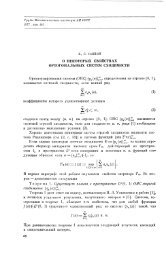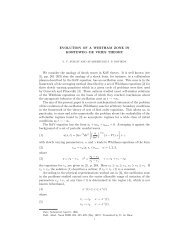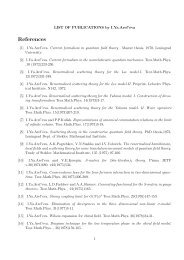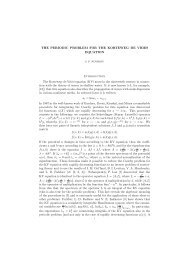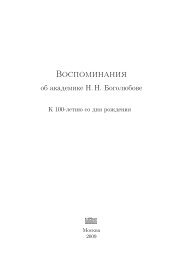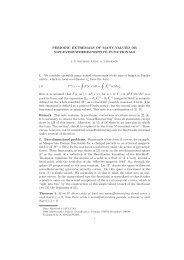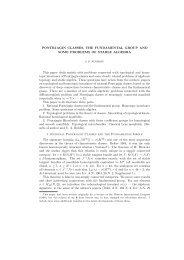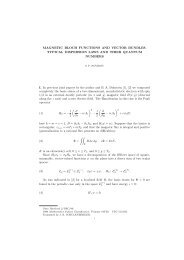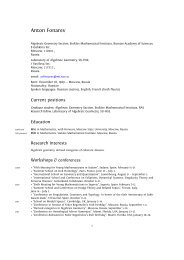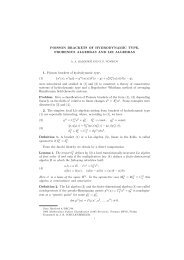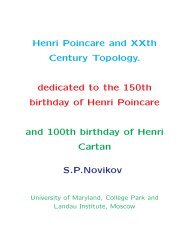POISSON BRACKETS AND COMPLEX TORI
POISSON BRACKETS AND COMPLEX TORI
POISSON BRACKETS AND COMPLEX TORI
You also want an ePaper? Increase the reach of your titles
YUMPU automatically turns print PDFs into web optimized ePapers that Google loves.
10 A. P. VESELOV <strong>AND</strong> S. P. NOVIKOVand k = g + 1 or (M − 1)-curves and k = g there is only one connectedcomponent—the real torus T g+1 or T g .The lemma is proved by an obvious verification. We have the real structurewith the tori (12) in the case k = g for KdV and the case k = g + 1 for NS +(the nonlinear Schrödinger equation with attraction).Elementary real structures of more general type, by definition, represent atransformation S k σ Γ : S k Γ → S k Γ generated by the original anti-involutionσ Γ on the curve; the “real” subset (in the complex case the torus T k ) may bedistinguished among the fixed points S k σ Γ (x) = x in some manner distinctfrom (12).Nonelementary real structures for k = g arise in the important example ofthe very familiar sine-Gordon equation and for k = g + 1 for the NS − equation(the nonlinear Schrödinger equation with repulsion). For all systems admittinggeneral Lax matrix representations of order l + 1 we have k = g + l (see[7], Chapter III, and [16]); if the realness conditions are such that the socalledmonodromy matrix after a period (in the periodic problem) for thecorresponding linear Lax L-operator belongs to a compact Lie group (similarto the group SU(2) for the sine-Gordon and NS equations), then the realstructure is nonelementary.Suppose the Poisson bracket is given by a pair (A, Q) and there is given ananti-involutionσ : M n → M n , σ Γ : N n+1 → N n+1 ,while the Hamiltonian is real: H(σx) = H(x), x ∈ M n , X a Riemann surface.According to §1, we have the fibering (10)N (A,Q)J Q (Γ)−−−→ M Aover a “general” level surface of the annihilator A.Definition. A nonelementary real structure is an arbitrary anti-involutionτ: N (A,Q) → N (A,Q) commuting with the fibering (10), i.e., with the usualinvolution on the family of Riemann surfaces: σ, σ Γ . The realness conditionsfor A and Q remain the same (11). On fibers J Q (Γ) the transformation τ mustbe a superposition of translation and an isomorphism of the real commutativegroups J Q (Γ).



